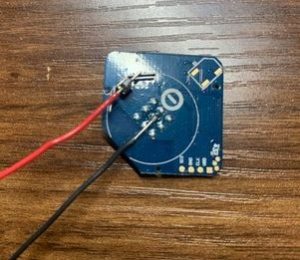This week I worked on adding support for multiple Bluetooth adapter sensors to the Raspberry Pi Zero’s script. To accomplish this, I had to modify the script to support multi-threading, with each thread registering a Bluetooth scanner with each of the Bluetooth USB adapters. In addition to adding these threads, I had to modify the distance pruning script to record and utilize multiple RSSI readings from each of the Bluetooth adapters, as opposed to using just a single RSSI value. To do so, I created a new Python class for handling items which stores the RSSI values and automatically adds itself to the item list according to the distance pruning algorithm. Additionally, the class handles dropout as well in case the beacon signal is lost.
As part of the distance pruning algorithm, we tested a smoothing coefficient to average out the reported RSSI values over time for better accuracy. However, from testing on the borderline distance where the beacons would be considered outside of the backpack (50cm), the smoothing did not appear to help prevent the beacon from “stuttering” (jumping in and out of the list of items considered to be inside the backpack).
A new idea we have for helping with accurately identifying which objects are in the backpack is to use a light-level based power switching circuit on each of the beacon tags, so that the beacons will only be active under dark lighting conditions. This would make it so that only the tags inside of the closed backpack would begin advertising, while items outside of the backpack would be exposed to the ambient room lighting and therefore remain dormant. To test the feasibility of such a solution, I soldered wires to the power traces of the beacon tags, and found that the tags automatically began advertising again after receiving power. Thus, it would be possible to control the beacon tags with an additional light-sensing circuit on the outside. However, a new enclosure would have to be produced for the tags, as such a light-sensing circuit would not fit inside the original casings of the tags.

In addition to working on the RPi-Tag interface, I also worked on the RPi-Web app interface. Although we were able to send data to the web app last week, we had not been able to send a full item list. This week, I modified the GATT server to report the item list in string (character-by character) format, with each item’s mac address added to the string, separated by a semicolon. This also required changing the GATT server’s characteristic type from integer to string. On the web app side, I modified the Javascript script to be able to continuously handle update events from the RPi, as opposed to the one-off data transfer the original script from last week did. This also required modifying the script to request notifications from the RPi GATT server, and also modifying the GATT server to periodically report the item list to the web app upon receiving the nofications request.
For next week I plan on exploring the light-sensing switch circuit concept further, by ordering photoresistors and transistors and testing how well the tags can be switched on and off. I also plan on mounting the RPi system inside a backpack, and testing whether the system can withstand the physical movement associated with normal use of a backpack.
